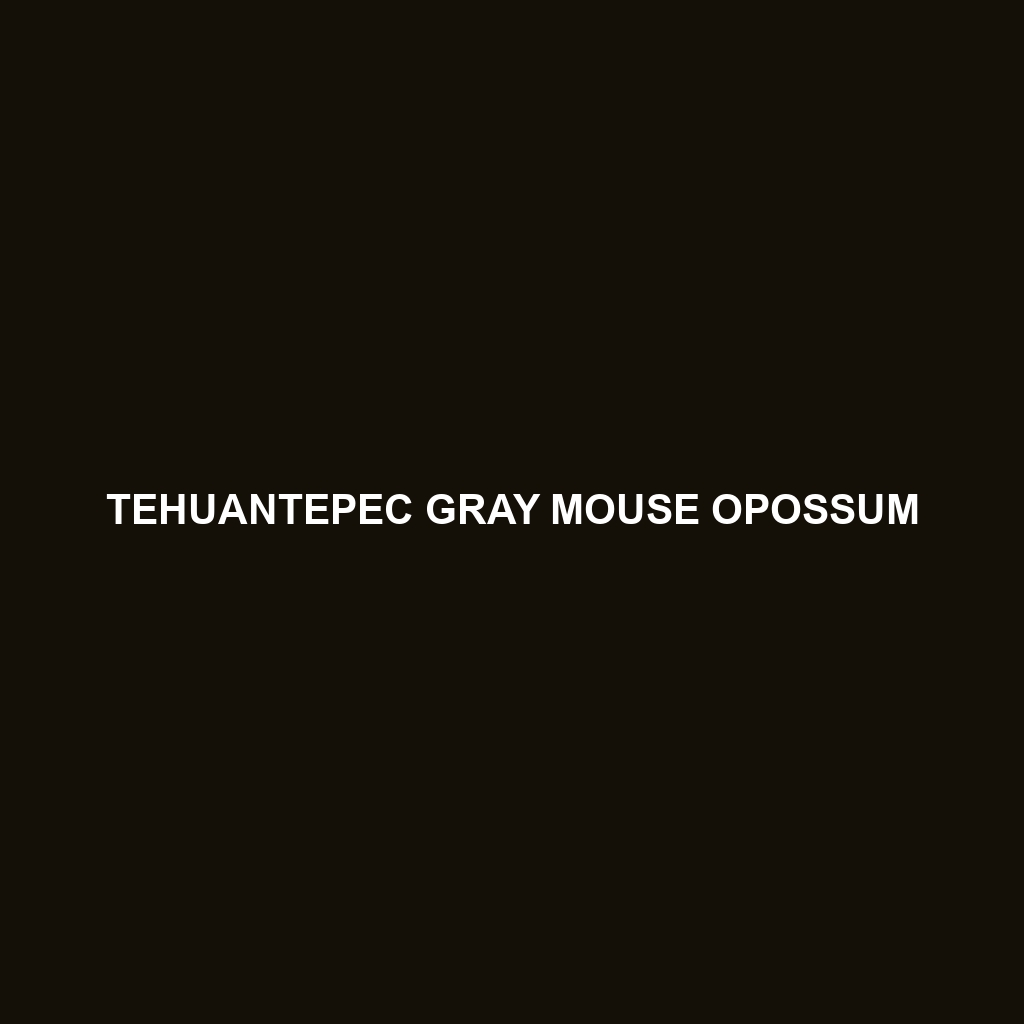Yucatan Gray Mouse Opossum (Tlacuatzin canescens)
:
The Yucatan Gray Mouse Opossum, scientifically known as Tlacuatzin canescens, is a small, nocturnal marsupial native to the Yucatan Peninsula of Mexico. Known for its agility and distinctive grayish fur, this animal is a fascinating example of the diverse wildlife inhabiting the tropical and subtropical forests of Central America.
Physical Characteristics:
Size: The Yucatan Gray Mouse Opossum is a small marsupial, with an average body length of 10 to 15 cm (4 to 6 inches) and a tail that can add another 10 to 15 cm in length. They typically weigh between 20 to 50 grams (0.7 to 1.7 ounces).
Coloration: This opossum features a predominantly gray fur coat which provides excellent camouflage against the forest floor and tree bark. Its underbelly is lighter, often a whitish or cream color.
Special Features: One notable feature is their prehensile tail, which is adept at grasping branches, aiding in their arboreal lifestyle. They also have large, dark eyes adapted for nocturnal vision.
Behaviors:
Social Interactions: Yucatan Gray Mouse Opossums are generally solitary creatures, mostly interacting with others during the breeding season or while caring for their young.
Feeding Habits: These omnivorous marsupials have a varied diet including fruits, insects, small vertebrates, and occasionally nectar. Their diet helps control insect populations and aids in seed dispersal, contributing to their ecological role.
Ecological Roles: Besides controlling insect populations and dispersing seeds, they also serve as prey for larger predators, thus fitting into the food web as both predator and prey.
Habitats:
Preferred Environments: This species thrives in tropical and subtropical forests, particularly those with dense understory vegetation which provides ample cover and food sources.
Range: They are predominantly found in the Yucatan Peninsula, including parts of Belize and Guatemala.
Adaptations:
Nocturnal Lifestyle: Adapted to a nocturnal lifestyle, they have excellent night vision and heightened senses of smell and hearing.
Arboreal Adaptations: Their prehensile tail and sharp claws allow them to navigate and forage in trees efficiently.
Camouflage: Their grayish fur provides effective camouflage in their natural habitat, helping them avoid predators.
Conservation Status:
Current Status: As of now, the Yucatan Gray Mouse Opossum is not listed as endangered, but like many species in the region, it faces threats from habitat destruction due to deforestation and human encroachment.
Conservation Efforts: Conservation efforts focus on habitat protection and sustainable land-use practices to ensure the survival of this species.
Fun Facts:
Marsupial Traits: Like all marsupials, female Yucatan Gray Mouse Opossums have a pouch where they carry and nurse their young until they are mature enough to survive independently.
Agility: These opossums are highly agile and can leap from branch to branch, much like squirrels.
Survival Skills: When threatened, they can play dead, a behavior known as thanatosis, to deter predators.
The Yucatan Gray Mouse Opossum is a remarkable example of nature’s adaptability and resilience. Learning about and protecting such species enriches our understanding of biodiversity and the delicate balance within their ecosystems.
